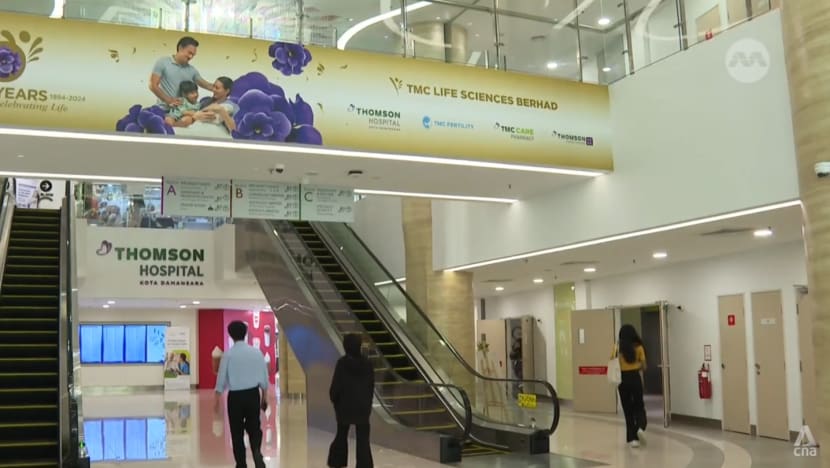Malaysia aims to generate US$2.7 billion in annual medical tourism revenue by 2030
The country is focusing on quality, affordability and personalised service to stay competitive in a crowded market amid rising global demand.

People walk inside Thomson Hospital in Kuala Lumpur, Malaysia.

This audio is generated by an AI tool.
KUALA LUMPUR: Indonesian patient Florence Jessica was just 28 when she was diagnosed with an autoimmune disease.
Finding the right care was not easy in her hometown of Balikpapan, as hospitals there lacked the specialised equipment and expertise she needed. As her condition worsened, she began looking for options abroad.
Her search eventually led her to a private hospital in the Malaysian capital of Kuala Lumpur.
"If we compare the equipment here with what is available in my hometown, there is a huge difference,” Ms Florence told CNA
The consultation at the Kuala Lumpur hospital took one to two hours, she said.
“It was very detailed, and they used ultrasound. Back home, there isn't such equipment, and the examination isn't as detailed,” she added.
Her decision to look overseas paid off. The hospital doctor detected something unusual in her knee and suggested a booster treatment.

The Indonesian patient counts among hundreds and thousands of international patients who choose to get medical treatment in Malaysia, reflecting a broader trend that is transforming the country’s healthcare landscape.
In 2023, more than one million healthcare travellers visited Malaysia according to the Malaysia Healthcare Travel Council (MHTC), generating almost US$500 million in revenue - a sharp rise from pandemic lows, and higher than pre-COVID figures.
The country welcomed 1.52 million international patients in 2024 according to data collected in March 2025, said the MHTC, putting it well on track to meet the goal of generating US$2.7 billion by 2030.
The country is mapping out strategies to draw in even more international patients - not just for treatment, but for a complete experience built on trust, comfort and comprehensive care.
Medical tourists coming to Malaysia now do not just hail from the traditional markets of Indonesia and China but also South Asia, the Middle East and even Europe.
The MHTC is leading efforts to grow the industry and strengthen the country’s position as a premier global medical hub by the end of the year.
"We must be ready, because the challenge we have - we need to have capacity,” said the council’s CEO Mohamed Ali Abu Bakar.
“Even in Malaysia right now, we have (a) lot of hospitals adding buildings, building brand new (ones), so hopefully the capacity is there for us to achieve these goals," Dr Mohamed Ali added.
The country is focusing on quality, affordability and personalised service to stay competitive in a crowded market amid rising global demand.
With medical inflation becoming a global concern, cost remains a key consideration for both local and foreign patients.
But experts said rising costs in Malaysia will not really affect medical tourists.
“Even... how much the cost may increase, it is still deemed to be affordable, because we are still one of the most cost-effective countries in terms of healthcare costs in the region,” said Dr Kuljit Singh, president of the Association of Private Hospitals Malaysia.
Editor's note: This article has been amended to correct information about the number of international patients that entered Malaysia in the first quarter of 2025. It should have been for the whole of 2024. We apologise for the error.















